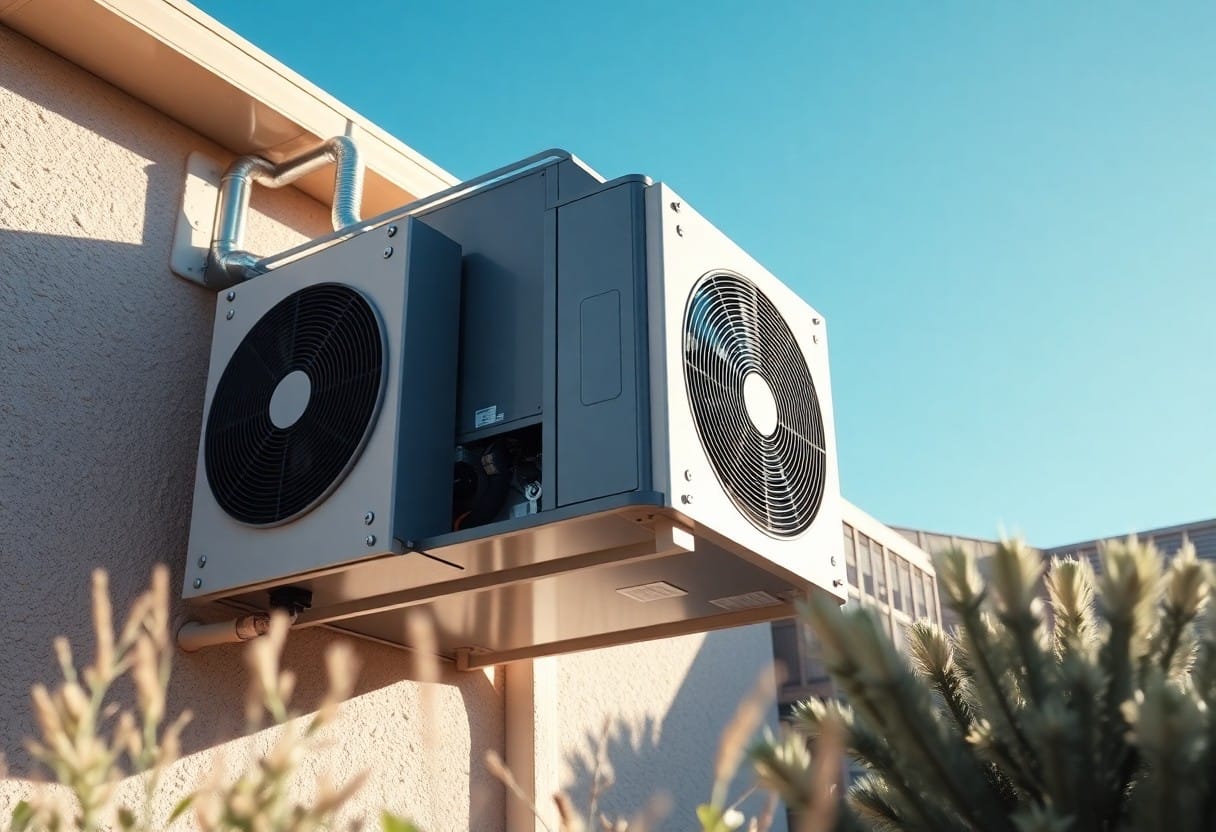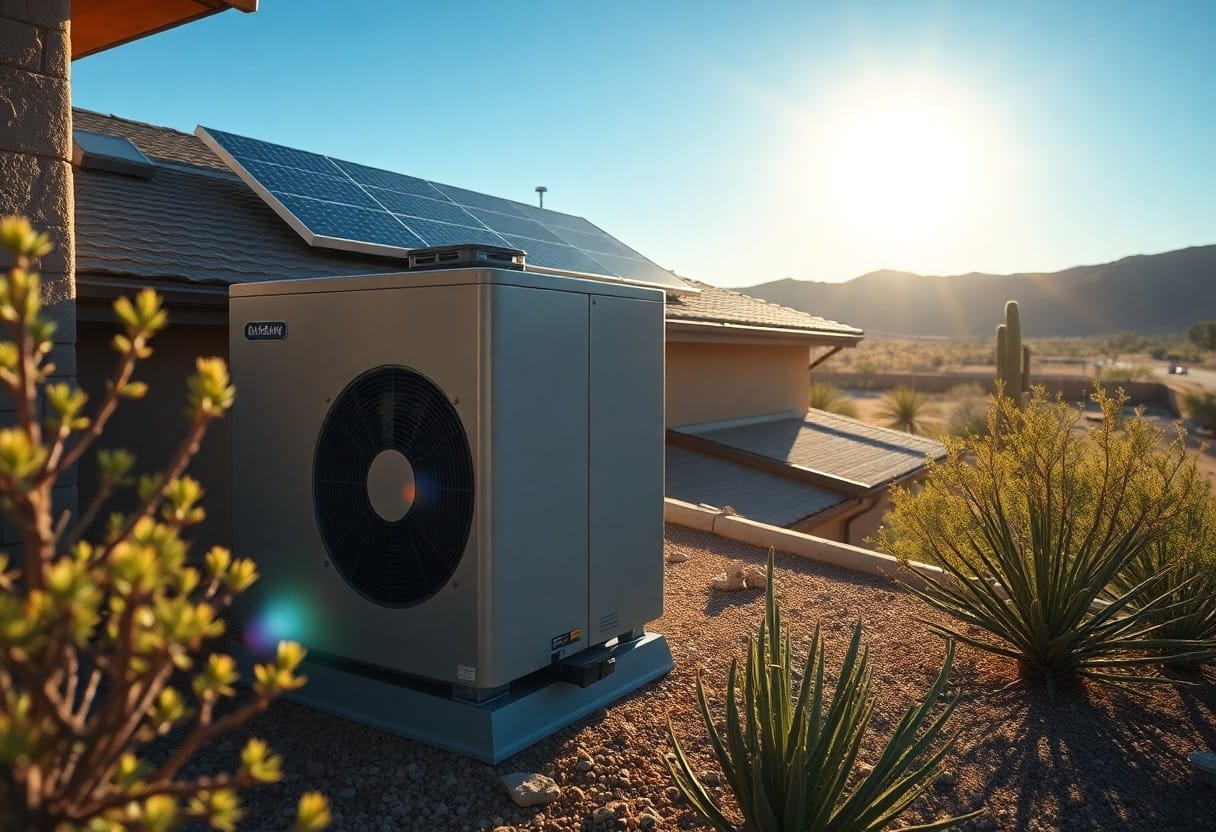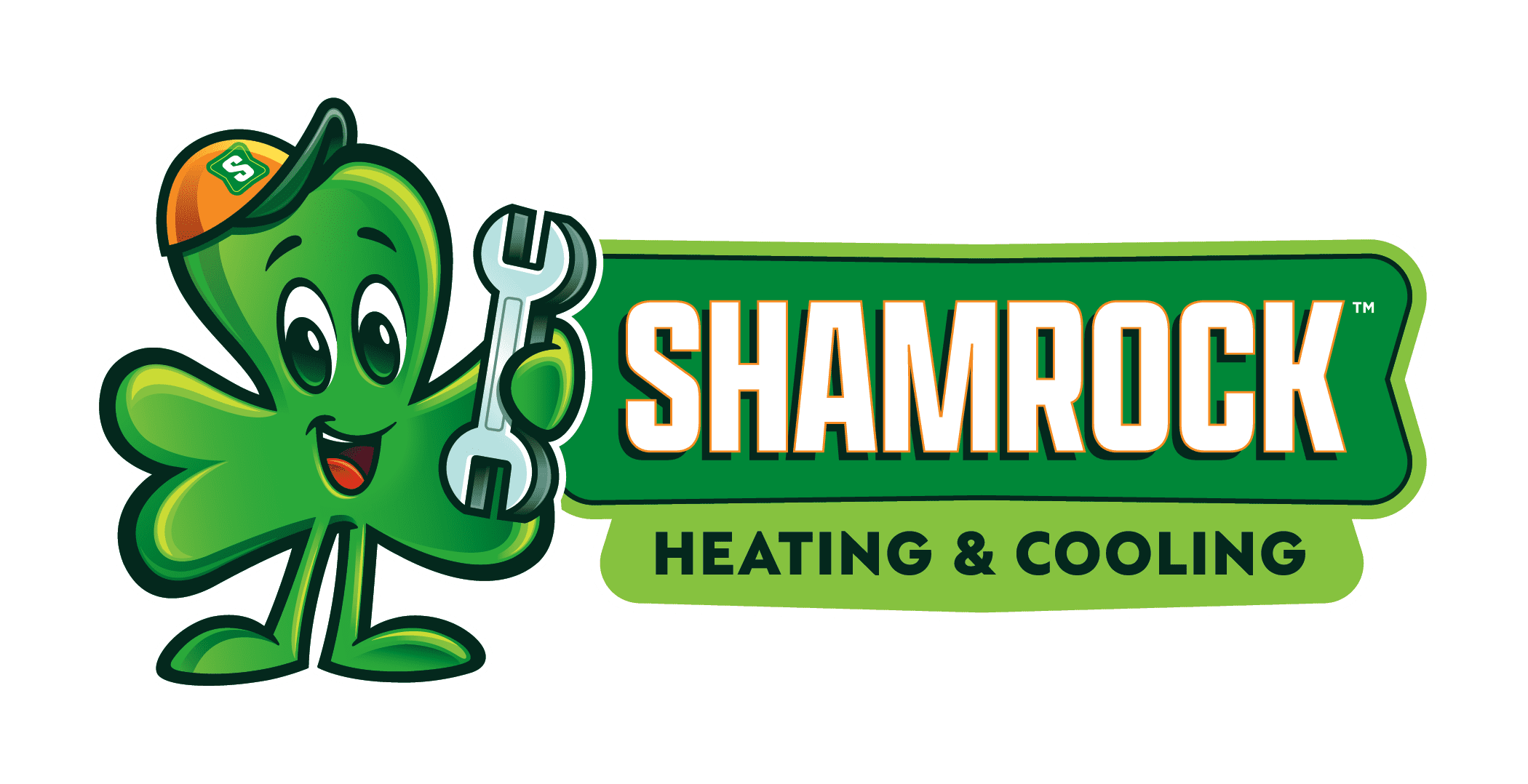There’s a significant opportunity for you to enhance your HVAC system’s efficiency during Arizona’s mild winter months. By implementing effective strategies, you can not only improve comfort in your home but also achieve considerable savings on energy costs. Understanding your system’s performance and making necessary adjustments can ensure optimal operation throughout the season. Take these steps to ensure your HVAC is ready to face any winter chill while maintaining energy efficiency.

Understanding HVAC Systems
Components of HVAC Systems
Your HVAC system is a complex integration of several key components, each designed to work harmoniously for efficient climate control. The main elements include the heating unit, which typically consists of a furnace or heat pump, the ventilation system responsible for exchanging indoor and outdoor air, and the air conditioning unit that cools the air during warmer months. Each of these components plays a pivotal role in maintaining your home’s comfort and energy efficiency.
Insulation and ductwork are also necessary elements included in your HVAC setup. Proper insulation minimizes heat transfer, which reduces heating and cooling demands. The ductwork channels conditioned air throughout your home, and ensuring it is sealed correctly prevents energy loss, enhancing overall system efficiency.
Common HVAC Challenges in Arizona
Arizona’s unique climate presents several challenges for HVAC systems. The dry heat can lead to increased wear on equipment, particularly for air conditioning units that are often working overtime to keep your home cool. Additionally, dust and debris can clog filters and impact airflow, requiring more frequent maintenance to ensure optimal system performance.
Energy efficiency becomes a critical consideration, especially during peak summer months when temperatures soar. Your HVAC system may struggle to keep up with the extreme heat, leading to potential overheating and breakdowns. As the demand for cooling rises, so do energy bills, prompting a need to explore advanced efficiency solutions such as smart thermostats and zoning systems.
Addressing these common challenges is necessary for maintaining your HVAC system’s reliability. For instance, regularly replacing filters can drastically improve airflow and reduce strain on your system. Additionally, scheduling seasonal maintenance checks can identify vulnerabilities in your equipment before they lead to costly repairs or inefficiencies. Taking these proactive measures helps ensure your HVAC system operates smoothly, even in Arizona’s harsh climate conditions.
Importance of Efficiency in Mild Winters
Energy Consumption Trends
Efficient HVAC systems can significantly reduce energy consumption during Arizona’s mild winters. You may be surprised to learn that even in temperate climates, HVAC systems account for over 50% of residential energy use. To combat this, modern systems utilize advanced technologies such as variable-speed motors, which adjust to the specific heating demands of your home. This not only optimizes performance but also minimizes waste. Take a look at your energy bills; if they spike during winter months, it may indicate that your system is not operating efficiently.
Your choices in heating options can also contribute to energy trends. For instance, heat pumps are increasingly popular in Arizona due to their ability to provide both heating and cooling efficiently. By employing these systems, you position yourself ahead of the curve, embracing options that reduce energy needs during the cooler season.
Cost Savings and Environmental Impact
Lower energy consumption directly translates to cost savings for you. With energy costs rising, an efficient HVAC system can keep your monthly bills manageable. For example, simply upgrading to a high-efficiency furnace can result in savings of up to 30% on heating costs. In addition, balancing your system’s performance with programmable thermostats optimizes energy use, allowing you to heat only when necessary. Over time, these small changes lead to substantial financial benefits.
The environmental impact of using efficient HVAC systems cannot be overstated. Reducing energy consumption not only lessens the strain on natural resources but also decreases greenhouse gas emissions. By choosing energy-efficient models and practices, you contribute to a more sustainable future. Each degree you save translates into tremendous savings in emissions, ultimately benefiting the planet. This dual advantage of saving money and aiding the environment makes HVAC efficiency imperative in any home.
Investing in energy-efficient HVAC technologies might require initial costs, but the long-term financial and ecological benefits far outweigh these investments. As you enjoy a comfortable home year-round, you will also be playing a significant role in mitigating climate change and promoting energy conservation in your community.
Optimizing HVAC Performance
Regular Maintenance Techniques
Implementing a strict maintenance schedule keeps your HVAC system running efficiently. Start with regular filter replacements every one to three months, as clogged filters can restrict airflow and cause your system to work harder. This simple task can lead to energy savings of up to 15% on your utility bills. Additionally, schedule professional inspections annually to check for refrigerant leaks, thermostat calibration, and overall performance assessments to ensure your system operates at peak efficiency.
Cleaning the outdoor condenser unit and clearing debris from around the unit also plays a significant role in efficiency. Regularly checking and cleaning the ducts can improve indoor air quality and prevent overheating or underperformance. If you’re in a dusty area, consider more frequent maintenance to combat dust accumulation. These small actions contribute to more reliable heating and cooling throughout the winter months.
Upgrading System Components
Upgrading specific components of your HVAC system can yield substantial benefits in performance and efficiency. For instance, switching to a programmable or smart thermostat allows you to tailor heating schedules for when you’re home or away, optimizing energy use. Modern thermostats can adjust settings based on real-time data, potentially reducing energy consumption by up to 30%.
Moreover, investing in high-efficiency components, such as variable-speed blowers or advanced filtration systems, enhances airflow and air quality. Consider replacing older HVAC units with Energy Star-rated models, which typically use 20-30% less energy than standard models, translating to significant long-term savings and a smaller carbon footprint.
Smart thermostats additionally offer features like remote access and energy usage reports, enabling you to monitor and adjust settings on the go. This level of control not only enhances comfort but also encourages proactive energy management. As technology evolves, these upgrades are not just beneficial; they’re vital for maximizing your HVAC system’s long-term efficiency and performance in Arizona’s mild winters.
Utilizing Smart Technology
Thermostats and Remote Monitoring
Smart thermostats, equipped with adaptive learning capabilities, significantly enhance your HVAC efficiency during Arizona’s mild winters. These devices adjust their settings based on your daily patterns, ensuring that your heating systems are only active when necessary. With features like geofencing, your thermostat can sense when you’re home or away, optimizing energy consumption by lowering heating when you’re not in the house. You may save up to 10-15% on energy costs simply by upgrading to a smart thermostat.
Remote monitoring capabilities provide you with real-time data straight to your smartphone. This means you can monitor your heating system even when you’re away from home, allowing you to make adjustments as needed. Alerts about temperature fluctuations or system malfunctions can prevent costly repairs by prompting timely maintenance. With tools such as energy usage reports, you can further analyze your heating patterns, identifying opportunities to enhance your efficiency even further.
Energy Management Systems
Implementing an energy management system (EMS) offers a comprehensive approach to optimizing your HVAC usage, particularly during Arizona’s winter months. These systems allow you to track, control, and analyze energy consumption across your home. An EMS can integrate various smart devices, coordinating operations to maximize efficiency, ensuring that your HVAC system runs at optimal performance without any unnecessary energy waste.
Using an EMS, you can automate various functions of your heating system such as scheduled setbacks, which reduce heating output during periods of unoccupancy. This means your system doesn’t work harder than needed, cutting down on energy costs while maintaining comfort. For homes with multiple zones, an EMS can efficiently balance heating—tailoring the output based on specific areas in real-time. The result is not only increased comfort but also an overall reduction in your energy bills by as much as 20-30% over the winter months, depending on your usage patterns and home design.
Additional Strategies for Efficiency
Insulation and Sealing
Upgrading your home’s insulation is one of the most effective ways to enhance HVAC efficiency during Arizona’s mild winters. Insulation not only reduces heat transfer, keeping your home warmer in colder months, but also lowers energy consumption. Focus on insulating areas such as attics, walls, and floors, using materials with a high R-value. Additionally, sealing gaps around windows and doors can prevent cold drafts, which can lead to significant energy loss. Typical air leaks can account for more than 20% of your heating and cooling costs, so addressing these can yield immediate financial benefits.
Investing in professional energy audits will help identify areas needing improvement. These audits employ techniques like blower door testing and thermal imaging to detect leaks that may be invisible to the naked eye. Consider using spray foam insulation for optimal results in hard-to-reach areas, as it expands upon application and creates a tight seal. In conjunction with proper sealing, high-quality insulation can increase your home’s energy efficiency and provide a more comfortable living environment.
Landscape and Shading Techniques
Smart landscaping can play a vital role in maintaining your home’s temperature without over-relying on your HVAC system. Planting trees strategically can provide natural shade for your home and reduce heat absorption during the warmer months, keeping your spaces cooler. Deciduous trees are particularly beneficial as they lose their leaves in winter, allowing sunlight to warm your home when you need it most. For maximum impact, position them to shield windows and walls that receive direct sunlight.
Incorporating shrubs and hedges can provide additional barrier effects against cold winds, creating a more stable indoor climate. Using hardscape features, like patios and stone pathways, can also help redirect heat. Furthermore, choosing heat-reflective materials for outdoor surfaces can minimize heat absorption and reduce the overall thermal load on your home.
Considering specific plant species can enhance your landscape’s effectiveness in shading. For instance, native plants are often more resilient and require less water, which is an important factor in Arizona’s arid climate. By selecting appropriate vegetation and implementing thoughtful landscaping techniques, you can create a natural cooling system for your home that complements your HVAC efforts and contributes to long-term energy savings.

Local Regulations and Incentives
Energy Efficiency Standards in Arizona
Arizona implements strict energy efficiency standards for HVAC systems to reduce energy consumption and costs. These regulations require that heating and cooling units meet specific SEER (Seasonal Energy Efficiency Ratio) and HSPF (Heating Seasonal Performance Factor) ratings. For example, residential air conditioners must have a minimum SEER rating of 14, while heat pumps generally require a minimum HSPF of 8.2. By adhering to these standards, you not only ensure compliance but also achieve significant energy savings over time.
Staying updated on local codes can significantly impact your HVAC system’s performance. Many areas also encourage regular inspections and maintenance to keep your systems running efficiently. The Arizona Department of Water Resources offers resources aimed at educating homeowners on energy-efficient upgrades that align with local standards.
Available Rebates and Programs
To promote energy efficiency, Arizona offers various rebates and incentives aimed at homeowners upgrading their HVAC systems. Programs through local utility companies often include rebates for high-efficiency heating systems or duct sealing services. Take, for instance, the Energy Efficiency Rebate Program, which can return several hundred dollars to you after purchasing an eligible system. These financial incentives can lower your initial investment and encourage more sustainable practices.
Additionally, federal tax credits may apply to certain energy-efficient HVAC installations, allowing you to deduct a portion of the costs from your taxes. Understanding and leveraging these programs can have a substantial impact on your overall expenses. To fully benefit, always check for the latest updates and stipulations regarding the eligibility of products, as they may change frequently.
A deeper look into the specifics of these rebates and programs reveals that many utility companies also provide free energy audits to identify areas where you could improve efficiency. Through these audits, you can receive tailored recommendations and detailed information on available financial incentives. This proactive approach can facilitate smarter decisions regarding your HVAC system upgrades and maintenance.
Final Words
Ultimately, optimizing your HVAC system for Arizona’s mild desert winters can lead to significant energy savings and enhanced comfort in your home. By considering the unique climate, you can adjust settings, maintain your system, and invest in the right technology to ensure that your heating needs are met efficiently. Regular maintenance checks and upgrades, such as programmable thermostats and high-efficiency filters, will help you maximize the performance of your HVAC system.
By tailoring your approach to the specifics of your environment, you’ll not only improve the efficiency of your heating systems but also extend their lifespan, reducing long-term costs. Adopting best practices for HVAC management during these mild winters will keep your home comfortable while also promoting sustainability and minimizing your carbon footprint.

